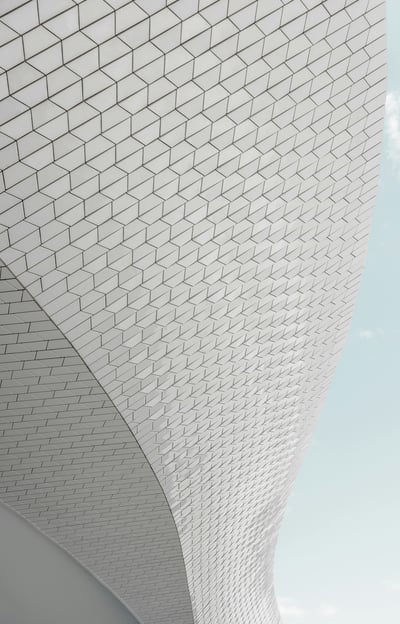Healthy living starts with the right choices
What is Capsule and Stealth Clothing?
Embracing Minimalism for Sustainable Fashion Beyond Logos
4/11/20259 min read


Looking for a fashion approach that's both timeless and eco-friendly? Capsule and stealth clothing offer an alternative to the constant cycle of trends that dominate the fashion industry. These styles focus on high-quality materials and classic designs that remain relevant season after season.
Capsule and stealth clothing prioritize quality materials and timeless designs that reduce waste and oppose fast fashion's harmful environmental impact. Rather than chasing fleeting trends, these styles emphasize versatile pieces that can be mixed and matched for years to come. The absence of loud logos and flashy monograms creates an elegant, understated aesthetic that transcends obvious wealth markers.
The minimalist approach of capsule wardrobes creates a sophisticated look while stealth clothing offers class ambiguity - appearing polished without broadcasting price tags. Both styles represent a shift away from conspicuous consumption toward thoughtful, sustainable fashion choices that benefit both personal style and planetary health.
Understanding Capsule and Stealth Clothing
Capsule and stealth clothing represent thoughtful approaches to personal style that emphasize quality, longevity, and subtlety. These fashion philosophies prioritize intentional wardrobe building over trend-chasing.
Defining Capsule Wardrobes
A capsule wardrobe is a curated collection of essential clothing items that work well together and don't go out of style. It typically consists of 30-40 versatile pieces that can be mixed and matched to create numerous outfits.
The concept was introduced in the 1970s but gained popularity in recent years as a response to fast fashion. Capsule wardrobes focus on quality materials like wool, cotton, and linen that last longer and age beautifully.
Benefits include:
Simplified decision-making when getting dressed
Reduced environmental impact through fewer purchases
Higher quality per item due to more intentional spending
People who adopt capsule wardrobes often report feeling less stressed about clothing choices and more satisfied with their personal style.






Exploring Stealth Clothing
Stealth clothing refers to high-quality garments without visible logos or brand identifiers. This style emphasizes craftsmanship, materials, and fit rather than status symbols.
Stealth clothing is "class ambiguous," meaning it doesn't broadcast wealth or status through obvious visual cues. The focus shifts to subtler quality markers like fabric hand, construction details, and proportions.
Key characteristics include:
Clean, minimal designs without flashy elements
Emphasis on fabric quality and construction
Absence of visible logos or monograms
Versatility across different settings
The stealth approach challenges the logo-heavy trends of previous decades. It reflects a growing awareness that true luxury lies in quality and longevity rather than conspicuous branding.
The Environmental Impact of Slow Fashion
Slow fashion offers a more sustainable alternative to the wasteful practices common in today's clothing industry. By focusing on quality and longevity, this approach significantly reduces environmental harm.
Contrasting Fast and Slow Fashion
Fast fashion creates massive environmental problems. The industry produces about 10% of global carbon emissions and is the second-largest consumer of water worldwide. Cheap clothing items are often worn only a few times before being discarded, creating mountains of textile waste.
Slow fashion takes the opposite approach. It emphasizes fewer, higher-quality garments that last for years rather than weeks. This reduces resource consumption and waste generation dramatically.
When consumers buy one well-made item instead of five disposable ones, they directly decrease their environmental footprint. Slow fashion brands typically produce smaller collections and avoid the constant turnover that defines fast fashion.
Material Focus in Sustainable Clothing
The materials used in clothing significantly impact its environmental footprint. Sustainable slow fashion prioritizes eco-friendly fabrics like organic cotton, hemp, and Tencel that require fewer chemicals and water to produce.
Many slow fashion brands also incorporate recycled materials. Fabrics made from plastic bottles, fishing nets, and textile scraps give new life to waste products while reducing demand for virgin resources.
Durability is equally important. Higher-quality natural fibers and construction techniques mean garments maintain their appearance longer and require less frequent replacement.
Natural dyes and low-impact coloring processes further reduce pollution from clothing production. By focusing on these material choices, slow fashion creates a pathway to more environmentally responsible wardrobes.
Projects section
Provide a short summary of your recent projects, highlighting the most important things.


Project title
This project aims to develop a user-friendly mobile application.






Project title
This project aims to develop a user-friendly mobile application.
Timeless Clothing: A Sustainable Approach
Choosing clothing that lasts beyond seasonal trends creates both environmental benefits and personal style advantages. These timeless pieces form the foundation of capsule wardrobes and stealth fashion approaches.
Benefits of Timeless Design in Fashion
Timeless clothing offers exceptional quality and versatility. Unlike trend-focused items, classic pieces like well-tailored blazers, quality denim, and simple knits remain relevant for years or even decades.
These garments typically feature superior construction techniques and higher-quality materials that withstand regular wear. The investment pays off over time as cost-per-wear decreases significantly.
Timeless pieces also simplify daily dressing decisions. They create a cohesive wardrobe where items work together effortlessly, eliminating the "nothing to wear" dilemma despite having fewer clothes.
From an aesthetic perspective, classic design tends to be more flattering and confidence-boosting. Without flashy logos or trendy elements, these clothes emphasize good fit and proportion rather than passing fads.
How Timelessness Opposes Fast Fashion
Timeless clothing directly challenges fast fashion's throwaway culture. Where fast fashion promotes constant consumption of low-quality, trend-driven items, timeless wardrobes encourage thoughtful purchasing and long-term use.
Key differences include:
Production cycle: Fast fashion: 52+ micro-seasons per year | Timeless approach: Season-less designs
Expected lifespan: Fast fashion: Often just months | Timeless pieces: Years or decades
Environmental impact: Fast fashion: High waste, high resources | Timeless approach: Reduced overall consumption
By choosing quality over quantity, consumers naturally reduce their environmental footprint. Each timeless garment potentially replaces dozens of trendy, disposable alternatives.
The financial math also favors timelessness. A $300 quality coat worn for 10 years costs less per year than replacing $60 fast-fashion versions every season.
Projects section
Provide a short summary of your recent projects, highlighting the most important things.


Project title
This project aims to develop a user-friendly mobile application.






Project title
This project aims to develop a user-friendly mobile application.
Monograms and Logos: The Shift in Trends
Fashion is moving away from prominent logos toward more understated designs that emphasize quality and longevity rather than brand visibility.
The Decline of Logos in Fashion
Logo-heavy clothing is becoming less popular among fashion-conscious consumers. What was once a status symbol is now often seen as flashy and ostentatious. Many luxury brands have noticed this shift and are creating more subtle designs.
Designers like Bottega Veneta and The Row have built successful businesses around logo-free products. Their focus is on craftsmanship and materials rather than obvious branding.
Recent fashion surveys show that 65% of millennials and Gen Z prefer clothing without visible logos. This represents a significant change from the logo-mania of the 1990s and early 2000s.
The shift is particularly noticeable in high-fashion circles, where subtle details and quality construction are more valued than brand recognition.
Rising Popularity of Logo-Free Clothing
Clean, minimalist designs are now dominating both runways and street style. Consumers are increasingly drawn to pieces that won't look dated after a season or two.
Key benefits of logo-free clothing:
Longer style lifespan
Greater versatility
More sophisticated appearance
Easier to mix and match
Stealth wealth fashion—expensive-looking but logo-free clothing—has gained traction among professionals and fashion influencers. These pieces communicate style without broadcasting the wearer's spending habits.
Many consumers now consider obvious logos a sign of inauthenticity or trying too hard. Instead, they prefer clothing that speaks through its design, fit, and material quality.
This trend aligns with sustainability values, as logo-free pieces tend to be worn longer and discarded less frequently than their branded counterparts.
Projects section
Provide a short summary of your recent projects, highlighting the most important things.


Project title
This project aims to develop a user-friendly mobile application.






Project title
This project aims to develop a user-friendly mobile application.
Capsule Wardrobes as a Minimalist Practice
Capsule wardrobes represent a thoughtful approach to fashion that values quality over quantity. They combine functionality with style while reducing environmental impact.
Building a Capsule Wardrobe
A capsule wardrobe contains 25-50 versatile pieces that mix and match easily. The focus is on timeless designs rather than trendy items that quickly become outdated.
The selection process begins with choosing a color palette—typically neutrals like black, white, navy, and beige—supplemented with a few accent colors. This makes coordination effortless.
Key components include:
High-quality basics (t-shirts, button-downs)
Versatile bottoms (jeans, trousers)
Layering pieces (cardigans, blazers)
Season-appropriate outerwear
A few statement pieces
The goal isn't deprivation but intentionality. By investing in well-made items that last years rather than weeks, consumers save money long-term while reducing waste.
Minimalism in High Fashion
High fashion has embraced minimalism through clean lines, superior materials, and expert craftsmanship rather than flashy logos or trends.
Designers like Jil Sander, The Row, and early Celine pioneered stealth wealth aesthetics—luxurious but understated. Their pieces feature exceptional tailoring and fabric quality instead of obvious branding.
This approach creates a class-ambiguous appearance that values personal style over status signaling. The focus shifts to subtle details: perfect stitching, innovative cuts, and premium fabrics that look better with age.
The minimalist fashion movement also challenges the wasteful cycle of seasonal collections. Instead, it promotes season-spanning pieces that remain relevant year after year.
In this context, luxury becomes about longevity and craftsmanship rather than fleeting trends or visible logos.
Projects section
Provide a short summary of your recent projects, highlighting the most important things.


Project title
This project aims to develop a user-friendly mobile application.






Project title
This project aims to develop a user-friendly mobile application.
The Philosophy Behind Stealth Style
Stealth style represents a deliberate choice to reject flashy logos and attention-seeking fashion in favor of quality, subtlety, and timeless appeal. It values craftsmanship over brand recognition and prioritizes the wearer's comfort and personal aesthetic over social signaling.
Stealth Style as a Class-Ambiguous Choice
Stealth style intentionally blurs socioeconomic markers by focusing on quality construction rather than recognizable status symbols. This approach creates clothing that doesn't immediately signal wealth or social position to observers.
People who embrace stealth fashion often select pieces that appear simple but feature exceptional materials and craftsmanship visible only upon close inspection. The absence of logos makes these garments difficult to place in traditional status hierarchies.
This class ambiguity serves practical purposes beyond aesthetics. It allows wearers to move comfortably between different social environments without standing out inappropriately. The wearer can appear polished and well-dressed without seeming ostentatious or status-obsessed.
Stealth dressing also reflects a shift in how many people view luxury and status today - valuing insider knowledge and personal taste over obvious wealth signaling.
The Subtlety and Restraint of Stealth Fashion
Stealth style embraces the power of restraint through clean lines, neutral palettes, and minimal detailing. These garments speak through their proportions, fit, and materials rather than bold designs or patterns.
The subtlety in stealth fashion focuses attention on the wearer rather than their clothes. This creates a sophisticated look that appears effortless and confident rather than trying too hard to impress.
Key elements include:
Quality fabrics with natural drape and movement
Precise tailoring that flatters without constraining
Thoughtful details visible mainly to the wearer
Versatile pieces that work across multiple settings
This restraint also supports sustainability by rejecting trend-chasing in favor of lasting style. Stealth fashion pieces typically remain relevant for years or even decades, reducing the need for constant replacement.